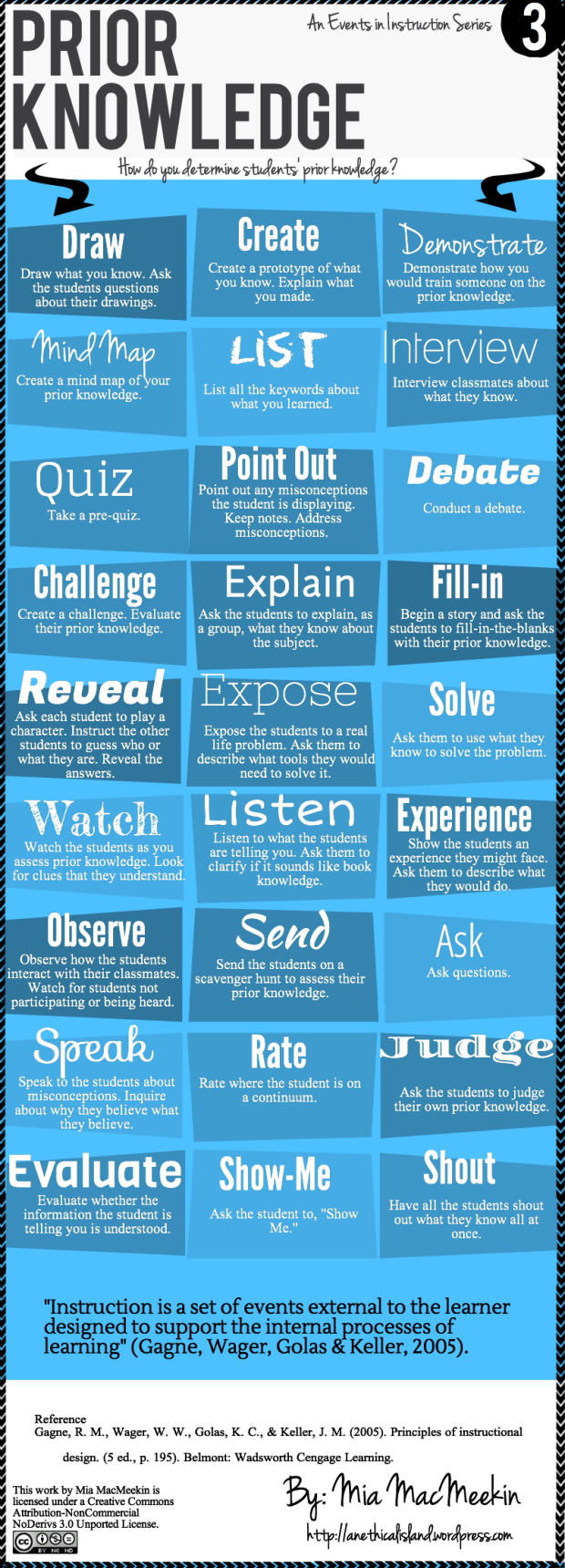Learning progresses primarily from prior knowledge, and only secondarily from the materials we present to students. Students come to the classroom with a broad range of pre-existing knowledge, which influences how they interpret and organize incoming information. How they process and integrate new information will, in turn, affect how they remember, think, apply, and create new knowledge. Thus it is important to assess such prior knowledge, attitudes, and beliefs very early in the semester, since they may either promote or hinder student learning. Assessing students’ prior knowledge can also help us craft instructional activities that build off of student strengths, and acknowledge and address their weaknesses. The following infographic offers 27 different ways to assess and activate your students’ prior knowledge.
Once prior knowledge and skill are assessed, there is a range of potential responses, depending upon the type of course, the uniformity of results, and type of supplemental materials and alternatives. For example, if a majority of the class possesses a weak understanding of a concept that you viewed as a critical prerequisite, you may decide to spend time reinforcing it in class, provide a supplementary session on it, or provide links to materials for students to engage with on their own. Similarly, if most students demonstrate proficiency in a skill you were planning to cover, you may decide to drop it and replace it with another skill that they have not yet developed, or adjust the level of complexity or time you spend on it. Thus, assessing prior knowledge early in the semester can enable both the instructor and the student to allocate their time and energies in ways that will be most productive.
Adapted from Eberly Center for Teaching Excellence & Educational Innovation, Carnegie Mellon University

